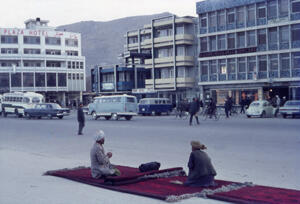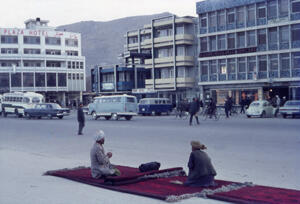Mario García Torres in the Museum Reina Sofía
The Museum Reina Sofía presents the work of Mario García Torres, shown for the first time at a Spanish institution. After more than three years of rigorous research, this Mexican artist living in Los Angeles uncovers a new era in a curious relationship that some artists have with history. In ¿Alguna vez has visto la nieve caer? García Torres uses slides in his audiovisual piece created specifically for this occasion to relay a largely unknown chapter in the career of artist Alighiero Boetti: the One Hotel which Boetti inagurated in Afghanistan.

His gallery in London, White Cube, states: “Mario Garcia Torres approaches his work with a playful – and sometimes nostalgic – take on the history of Conceptual art, unlocking many of its forgotten narratives to bring forth new ideas and meanings. Through his interventions, slide projections, films and installations, Garcia Torres rethinks the tradition in a more personal way, animating events in recent history with a curiosity that is both critical and sensual. An archaeologist of cultural history, Garcia Torres is developing an aesthetic of information”.
What Happens in Halifax Stays in Halifax (in 36 Slides) (2004-2006) revisits a half-buried moment in the history of Conceptual art. In 1969, David Askevold, at the time an instructor at Halifax's NSCAD University, asked his students to enact a Robert Barry project that required the students to keep a secret. Garcia Torres arranged a reunion of some of the students who participated in the original occasion, and the documentation of this event, along with black-and-white photographs of Halifax's mundane cityscape and sites associated with the project, became the final public presentation of the work. The photographs are subtitled; work and image combine to form a kind of essay on the limits of memory and immateriality. For What Doesn’t Kill You Makes You Stronger (2007), Garcia Torres examined Martin Kippenberger’s attempts to establish a Modern Art Museum on the Greek island of Syros, creating a discursive portrait – half travel log, half proposal – of one of the more quixotic episodes in the history of contemporary art.





